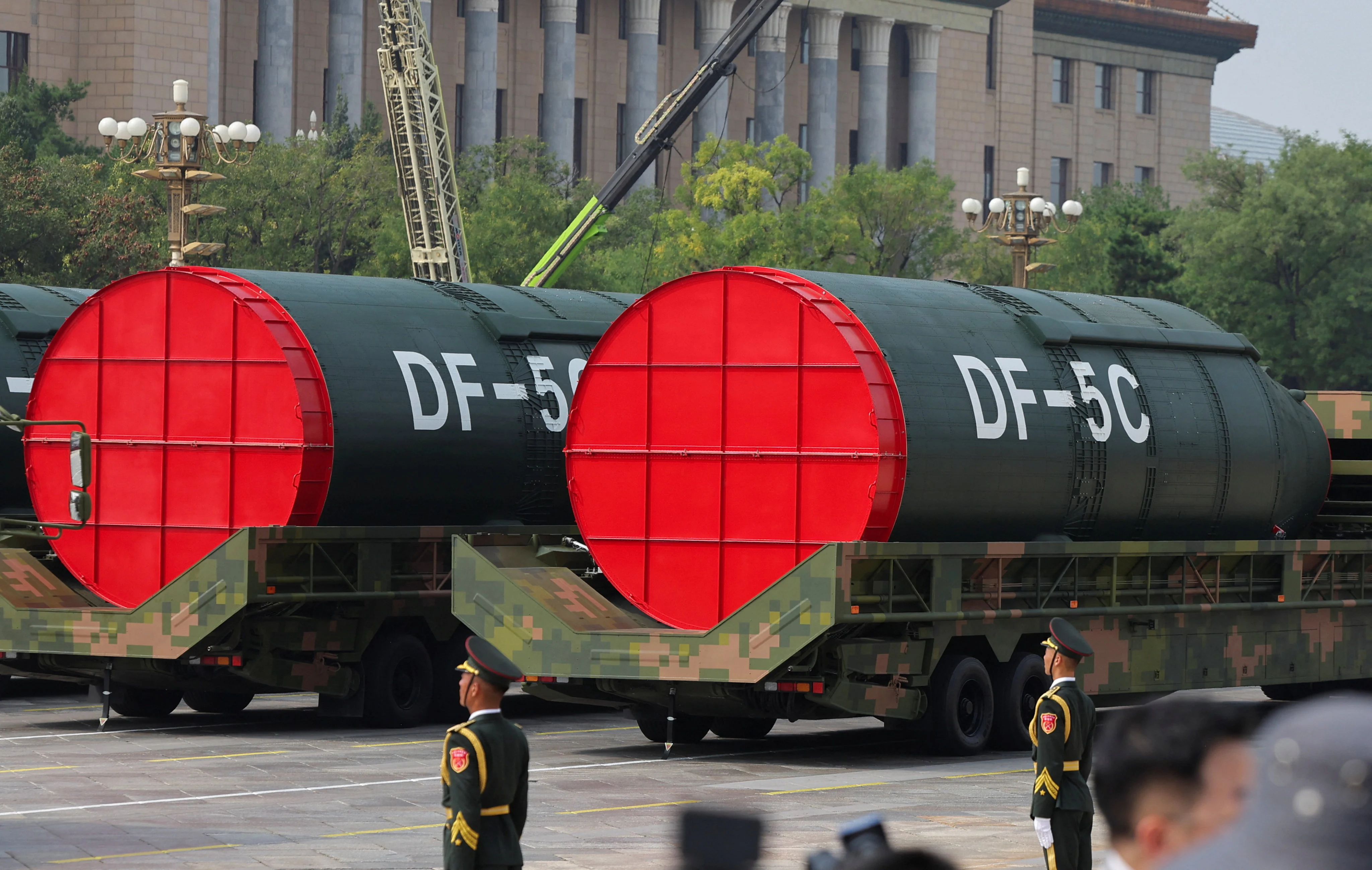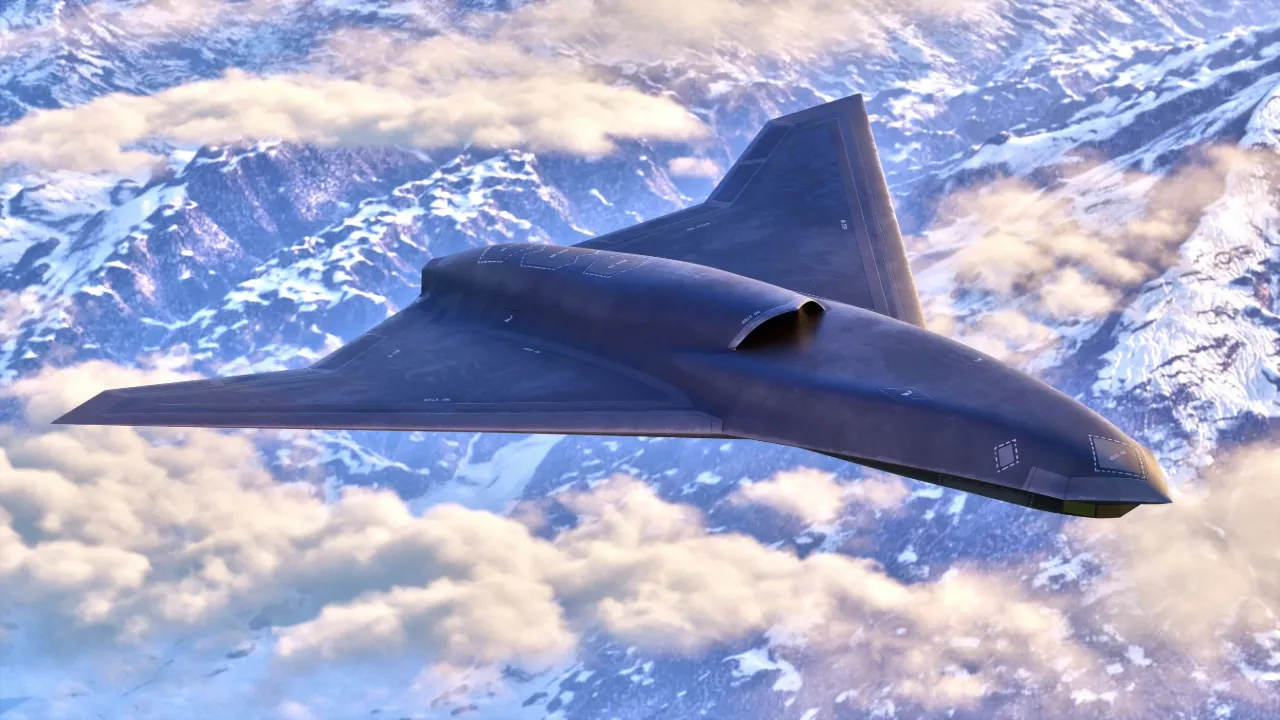By Seong Hyeon Choi
Copyright scmp

The end of this month’s military parade in Beijing – a time slot traditionally reserved for the People’s Liberation Army’s most lethal nuclear weapon – was marked by a formation of DF-5C missiles, the latest variant of China’s first-ever long-range intercontinental ballistic missile (ICBM) DF-5 series.
The PLA’s other latest ICBM systems include the DF-61 and DF-31BJ, as well as the DF-41 – known to be China’s latest ICBM version in service.
The DF-61 and DF-31BJ were also first unveiled in the September 3 Victory Day parade marking the 80th anniversary of Japan’s defeat in World War II.
But the DF-5 series remains a major strategic asset for the PLA Rocket Force.
Its latest variants, with an extended range deemed capable of reaching the entire continental United States, ensure that the DF-5 continues to play a significant role in China’s nuclear deterrence strategy.
History and development
The DF-5, which came into service in 1981, is China’s first ICBM, developed as part of the Dongfeng surface-to-surface missile series.
The name Dongfeng, meaning “east wind”, is derived from a speech by Mao Zedong in 1957, after the Soviet Union transferred its R-2 ballistic missile to China to support its missile programme. “There are now two winds in the world: the east wind and the west wind,” Mao famously stated, symbolising the rising influence of socialist China versus the Western capitalist powers.
China’s development of its indigenous ICBM began in the mid-1960s, when then premier Zhou Enlai proposed completing research and development on a long-range missile between 1969 and 1972, and conducting flight tests of the ICBM by 1975.
Designed by the China Academy of Launch Vehicle Technology and produced by Factory 211, also known as Capital Astronautics, the DF-5 made its first test flight in 1971 and underwent numerous developmental tests throughout the 1970s.
Two successful DF-5 full-range tests were conducted in May 1980, with an estimated operational range of around 10,000-13,000km (6,200 to 8,000 miles) and a flight path that ended with a splashdown in the Pacific Ocean.
As Beijing faced pressure from the Sino-Soviet split from the late 1960s, the urgent need for long-range missile forces pushed the DF-5 to be delivered in 1981 – only a few months after full-range tests – to the Second Artillery Corps, which became the PLA Rocket Force in 2016.
Variants and deployment
The DF-5 is 32.6 metres (107 feet) long, with a diameter of 3.35 metres and mass of 183 tonnes, and uses liquid-fuel propellant with a two-stage engine to be launched from a silo. It reaches between 13,000km and 16,000km – the longest range among Chinese ICBM forces and capable of covering all of the US mainland – with speeds of up to Mach 22.
After its delivery, China began developing different variants of the DF-5, starting with the DF-5A in 1986, which extended the range to more than 15,000km and increased throw-weight – the effective weight of ballistic missile payloads – from 7,000kg (15,400lbs) to 10,200kg.
In 2015, Beijing showcased the DF-5B during a military parade marking the 70th anniversary of Victory Day. It is reportedly equipped with multiple independently targetable re-entry vehicles (MIRVs) that enable it to carry up to five warheads, each capable of hitting different targets.
The DF-5 series has been further upgraded, culminating in the DF-5C showcased in the latest Victory Day parade, which is known to have up to 12 MIRV warheads and an even longer operational range. State broadcaster CCTV described it as having the capability to “cover the entire globe”.
With a payload of up to 4,000kg, the blast yield of the DF-5 series varies by variant.
Non-MIRV versions, such as the DF-5 and DF-5A, are known to have around 4 to 5 megatons of blast yield with their single warheads, while MIRV versions, such as the DF-5B and DF-5C, are known to have around 1 megaton per warhead.
After its development, the DF-5 missile was initially stored horizontally in tunnels and required two hours of fuelling before launch. By 1981, two silo-deployed DF-5s were operational in central China, capable of being kept in a ready-to-fire status, while decoy silos were built to improve survivability.
According to a Pentagon report on Chinese military and security development published last December, the PLA Rocket Force has in its arsenal around 400 ICBMs that can reach the continental US, “more than doubling” the size of its DF-5 liquid-silo force, potentially resulting in about 50 silos.
Around 20 DF-5 silos were built before 1995 and are currently known to be located at three sites in central China, where at least 30 new silos are to be added, and two Rocket Force brigades are expected to field the latest DF-5C, according to the Pentagon.
Nuclear deterrence
The DF-5 series stands as a cornerstone of Beijing’s strategic nuclear arsenal, poised to play a crucial role in its nuclear deterrence operations.
The latest DF-5C variant and the US’ most advanced Minuteman III ICBM represent two distinct approaches to land-based nuclear deterrence. While both are silo-based ICBMs, they differ fundamentally in their propulsion, payload and strategic role.
The DF-5C is a two-stage, liquid-fuelled missile with a larger payload capacity – up to 12 MIRV warheads – serving as a counterforce weapon capable of global strike. While the fuelling process for the DF-5 series’ liquid-fuel engines is time-consuming, taking around two hours, some sources say the new DF-5C has resolved the issue.
In contrast, the Minuteman III is a three-stage, solid-fuelled missile, allowing for rapid launch readiness. While it is the first deployed ICBM to be fitted with three MIRV warheads, it has been de-MIRVed to carry a single warhead following the Strategic Arms Reduction Treaty (START) between the US and Russia.
Compared to the DF-5C’s combined blast yield of 12 megatons for the 12 MIRV warheads, the Minuteman III has a smaller yield of up to 350 kilotons.
Despite the differences in their propulsion and payloads, the two missiles can both strike targets more than 13,000km across the globe.
While the Minuteman III has undergone upgrades, the DF-5C represents a more recent technological evolution, reflecting different strategic deterrence philosophies. The comparison highlights the contrast between China’s focus on heavy, high-yield missiles and the US’ emphasis on a more compact and quick-to-launch system.
The Pentagon’s report in December said the significant growth of the PLA’s DF-5 silo force suggested that Beijing was making progress in establishing its “early warning counterstrike” posture to “increase the survivability and responsiveness of these launch sites”.
The increased number of DF-5 silos suggests that Beijing’s nuclear force policy is based on deterring a first strike and retaliating with a counterstrike if deterrence fails, targeting an enemy’s military, population and economy to maintain a survivable nuclear force capable of multiple counterstrikes to inflict damage on the adversary.
Such a strategy might allow the two militaries to de-escalate and return to conventional conflict with remaining deterrent capabilities, the Pentagon report said.



